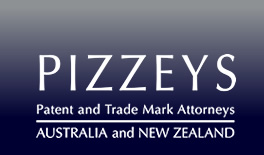
Historically, difficulties have arisen where the pharmaceutical substance is claimed in combination with a delivery device, typically a patch or implant. There are a number of office decisions where patents for trans-dermal patches have been found ineligible for an extension on the basis that such a claim is not directed to a “pharmaceutical substance per se”.
In a recent patent office decision (N.V. Organon [2009] APO 8), in which a patent for a steroid-impregnated, polymeric implant was found to be eligible for an extension, the patent office held that the proper approach was to look at the level of integration between the pharmaceutical substance and the associated delivery device in deciding whether the claim should be regarded as being directed to a pharmaceutical substance per se (extension possible) or to a pharmaceutical substance in combination with a separate feature (extension not possible).
Pursuant to the N.V. Organon decision, wherever possible, the claims of a patch patent should not be limited by reference to the backing layer of the patch as this was likely to be held to be a “separate feature” which would make the patent ineligible for extension.
The patent office has now handed down its first patch decision subsequent to the N. V. Organon decision, LTS Lohmann Therapie-Systeme AG and Schwarz Pharma Limted [2009] APO 16. The claims in question included reference to the backing layer. As predicted, the office found the patch patent ineligible for extension.
The patent related to a transdermal therapeutic system (transdermal patch) to deliver the D2 receptor agonist rotigotine), for the purpose of treating Parkinson’s syndrome. Transdermal administration of rotigotine via a patch is known in the art, but the invention lies in the matrix formulation which allows administration of the active, free base form of rotigotine, improved release of the agonist from the patch, and ease of manufacture.
It was found that the claimed pharmaceutical compound comprised three components – a polymer matrix containing rotigotine, an inert backing layer and a protective layer. It was further found that the claimed product as a whole, comprising a protective layer which is to be removed before use, constituted a pharmaceutical substance in combination with a separate integer, and consequently the application does not satisfy the requirements of s 70(2)(a) and the patent cannot be granted an extension of term. Boehringer Ingelheim International GmbH v Commissioner of Patents [2001] FCA 647 and Prejay Holdings Ltd v Commissioner of Patents [2003] FCAFC 77 applied.
In this latest patch case, the patentee erred in claiming the backing layer. The additional claim limitation of “an inert backing layer” appears to have been unnecessary to achieve patentability and had the unintended consequence of making the patent ineligible for extension.
